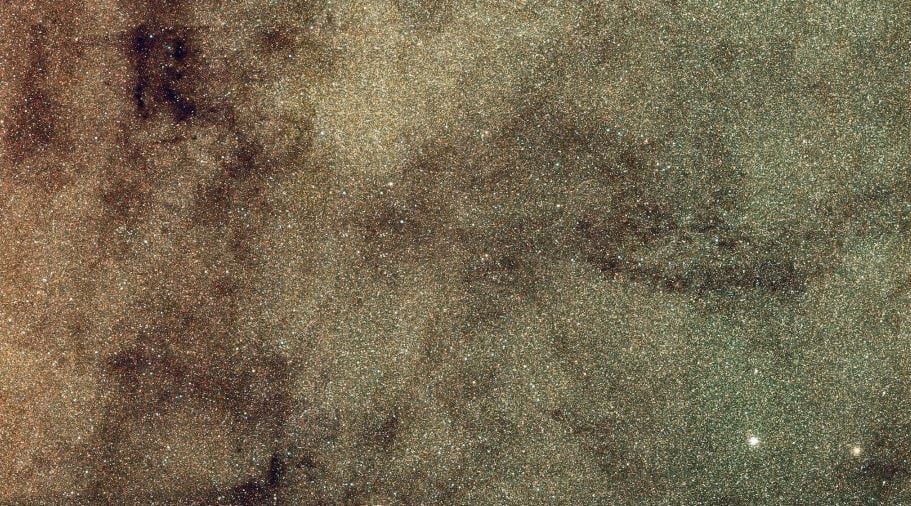Scientists have discovered the oldest known stars ever to be detected – they used to exist when the Universe was just a 300 million year-old baby, and before our galaxy the Milky Way was formed.
This study – involving scientists from Australia, the UK, the US, Sweden, Poland, Germany, France and Chile, who wrote about their findings in the academic journal Nature – found the stars near the center of the Milky Way, in the ‘Bulge’.
The super-old stars are surprisingly pure, and contain material from an even older star that perished in a gigantic explosion called hypernova.
 The oldest stars ever discovered are in ‘The Bulge’ in the centre of our Milky Way. (Image: ANU Youtube)
The oldest stars ever discovered are in ‘The Bulge’ in the centre of our Milky Way. (Image: ANU Youtube)
The Milky Way formed around the old stars
Lead author, a PhD student Louise Howes at The Australian National University (ANU), said:
“These stars formed before the Milky Way, and the galaxy formed around them.”
After discovering and analyzing the nine pure stars, the researchers say their findings challenge current theories regarding the early Universe’s environment, from which these stars were formed.
Ms. Howes said:
“The stars have surprisingly low levels of carbon, iron and other heavy elements, which suggests the first stars might not have exploded as normal supernovae. Perhaps they ended their lives as hypernovae – poorly understood explosions of probably rapidly rotating stars producing 10 times as much energy as normal supernovae.”
 An artist’s impression of a hypernova. (Image: anu.edu.au. Credit: ESO)
An artist’s impression of a hypernova. (Image: anu.edu.au. Credit: ESO)
Like finding a needle in a haystack
According to project leader Prof. Martin Asplund, who works at ANU’s Research School of Astronomy and Astrophysics, finding these ancient stars amongst the billions of stars in our Milky Way was like finding a needle in a haystack.
Prof. Asplund said:
“The ANU SkyMapper telescope has a unique ability to detect the distinct colours of anaemic stars – stars with little iron – which has been vital for this search.”
After discovering an extremely old star on the edge of our galaxy, the team focused on the dense central parts of the Milky Way, where stars had been formed even earlier.
 SkyMapper image of the centre of the Milky Way. (Image: anu.edu.au. Credit: SkyMapper/Chris Owen)
SkyMapper image of the centre of the Milky Way. (Image: anu.edu.au. Credit: SkyMapper/Chris Owen)
The researchers sifted through approximately five million stars observed with SkyMapper to pick out the purest – and therefore oldest – specimens. They then studied them in more detail using the Anglo-Australian Telescope, a 3.9-metre equatorially mounted telescope situated at the Siding Spring Observatory near Coonabarabran in New South Wales, plus the Magellan telescope in Chile.
The aim was to determine what their chemical make-up was.
Prof. Asplund and colleagues also demonstrated that the stars have been in the centre of the Milky Way their entire lives, and are not just passing through, which further suggests they really are the oldest known stars in the Universe.
Citation: “Extremely metal-poor stars from the cosmic dawn in the bulge of the Milky Way,” L. M. Howes, M. Asplund, A. R. Casey, S. C. Keller, D. Yong, D. M. Nataf, R. Poleski, I. Soszyński, K. Lind, C. Kobayashi, C. I. Owen, M. Ness, J. Skowron, M. S. Bessell, G. S. Da Costa, B. P. Schmidt, P. Tisserand, A. Udalski, M. K. Szymański, G. Pietrzyński, K. Ulaczyk, Ł. Wyrzykowski, P. Pietrukowicz, S. Kozłowski & P. Mróz. Nature. 11 November, 2015. DOI: 10.1038/nature15747.
ANU Video – Oldest stars discovered
